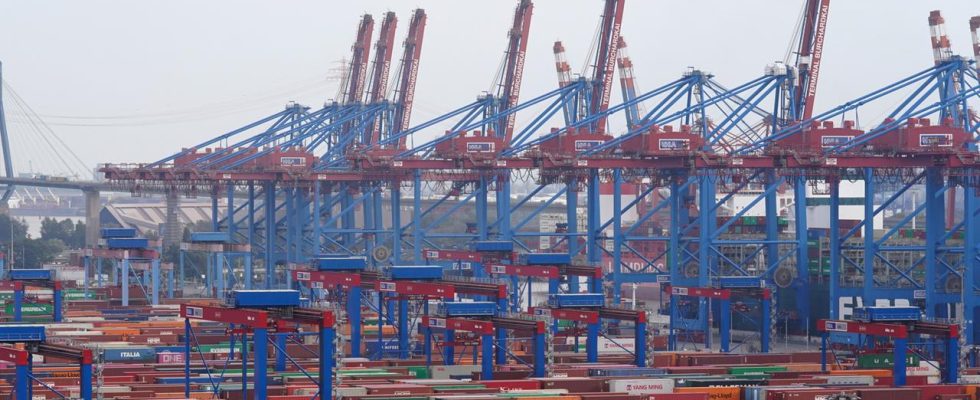background
Last year’s foreign trade balance shows the consequences of the uncertainties on the world markets for German exporters. However, imports in particular fell sharply.
While German exports remained relatively stable last year, imports fell by around 150 billion euros. Imports from China alone fell by 37 billion euros.
The Federal Statistical Office in Wiesbaden published the first figures on foreign trade in 2023 today. Goods worth 1,562 billion euros were exported from Germany and goods worth 1,353 billion were imported. This means that exports fell by two percent and imports by ten percent compared to 2022.
Weak consumption, fewer imports
China is and remains by far the country from which Germany imports the most. These are mainly cheap mass-produced goods and raw materials. In recent years, China has also supplied more and more sophisticated electronics and is planning to attack the European car market. The West is concerned about how communist China is determinedly building up its industry.
The current decline in imports by a fifth is due, among other things, to fears of becoming dependent on a dictatorship. The realization that maritime trade is vulnerable and therefore unsafe also plays a role. So companies look for other suppliers nearby. In addition, weak consumption in Germany may have contributed to the sharp decline in imports.
USA most important export country
Most exports from Germany go to the USA: last year, goods worth 158 billion euros were sold to the United States, which represents a slight increase compared to 2022.
In addition to the USA and China, the direct neighboring countries and the European Union play the largest roles in German foreign trade. The Netherlands is ahead thanks to its ports, but also agriculture and industry.
Cars, machines and pharmaceutical products
German exports depend on the metal industry. The list of product groups that Germany sells abroad is led by cars, trucks and tractors (272 billion euros), followed by mechanical engineering (254 billion euros), electrical engineering and pharmaceuticals.
These product groups also top the German import list. On the one hand, this is explained by preliminary products and so-called semi-finished products, which can be produced more cheaply abroad and are refined in Germany. When it comes to cars, the situation is somewhat different: small, cheap cars are mainly manufactured abroad, while the German car industry sells large quantities of expensive cars worldwide.
Even bigger outtrade surplus
When a country exports more than it imports, it is said to have a “positive foreign trade balance”. Because imports fell significantly more than exports, the German foreign trade balance is even more positive than before: a surplus of 209 billion euros. In 2022 the situation was difficult due to the sharp rise in prices for energy sources from abroad. The foreign trade balance for 2022 was 89 billion euros, the lowest value since 2000.
Since Germany has few raw materials but many people in a small area, it is important for the economy to export a lot. The bottom line is that values come into the country that help to finance a high level of prosperity and the welfare state. It is in the nature of things that not all countries can have positive foreign trade balances. Global foreign trade balances out overall. Critics, especially in countries with weak exports, are skeptical about strongly positive foreign trade balances and fear a lack of fairness.
Consequences of the Russian war in Ukraine
The war that Russia is waging in Ukraine has left a clear mark on German foreign trade. Ten years ago, goods worth 36 billion euros were delivered to Russia and goods were purchased for 41 billion euros. Last year, exports were less than nine billion euros and imports were less than four billion euros. Compared to the already weak first year of the war in 2022, this means a decline of 40 percent in exports and 90 percent in imports.
Ukraine, on the other hand, has been expanding its trade with Germany at a low level for decades. The decline of a tenth in German imports from Ukraine is due to the war economy there and the contested delivery routes. On the other hand, goods worth almost seven billion euros were delivered from Germany, almost 50 percent more than in the previous year. There is also support from Ukraine behind these commercial transactions.

